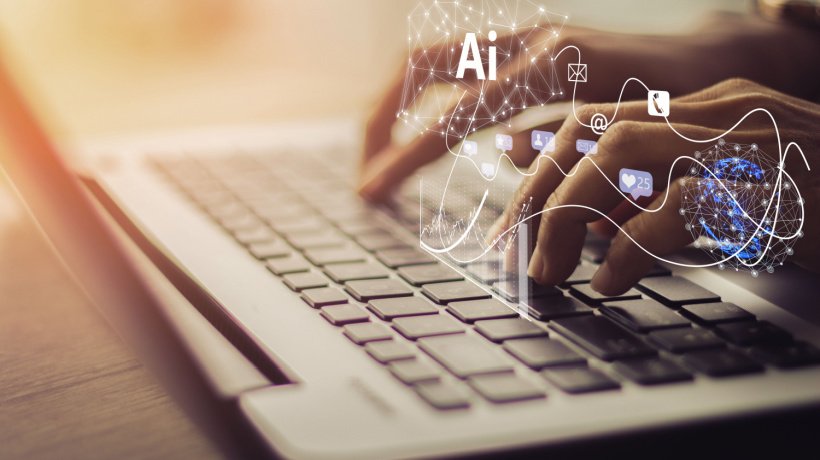5 Ways AI Can Maximize Your Development Workflow
Artificial Intelligence (AI) technology is advancing at a breakneck pace, and its ramifications on web-based eLearning are notable. Generative AI—an AI subset specializing in producing unique content—holds tremendous potential for revolutionizing the development of learning tools online. And, with the release of GPT-4, the prospect will only increase the likelihood of generative AI being used in various industries, including eLearning development. This article explores five approaches eLearning developers can use to leverage generative AI and take their web-based learning platforms to the next level to provide students with a truly remarkable learning experience.
How To Implement AI In eLearning Development
Automating Content Creation For Web-Based Learning Tools
One of the most prominent applications of generative AI in eLearning is the automation of content creation for digital learning materials. Developers can utilize generative AI to rapidly produce diverse and fascinating learning materials, including text-based content for webpages, interactive modules, images, videos, and infographics. Not only does this practice save time and resources, but it also creates stimulating course material. To ensure the quality and relevance of generated content, developers must fine-tune AI models according to specific learning objectives and balance AI-generated content with human review and editing.
By leveraging generative AI this way, developers can create new content and learning materials, drawing on existing resources such as audio recordings, video clips, images, and simulations. This allows educational institutions and businesses to develop customized learning experiences without manual coding or rapid editing. Furthermore, humans can review and edit AI-generated content to ensure accuracy and completeness. Ultimately, generative AI can streamline creating and improving digital learning materials, allowing educators to focus on more meaningful tasks such as assessing learning outcomes and providing personalized instruction.
Personalizing Web-Based Learning Experiences
Generative AI tools can also adapt and personalize content according to individual learners' needs and preferences within web-based tools. AI algorithms can customize learning paths by assessing learners' profiles, interests, and prior knowledge, offering a more targeted and effective learning experience. AI algorithms can use Machine Learning to customize a learner's web-based experience by gathering data from their profile and past behavior. For instance, if a student has exhibited better comprehension with audio tutorials than reading conventional text, the algorithm might suggest they access more audio resources tailored to their interests and prior knowledge.
As the algorithm monitors the student's performance, the generative AI function can adjust real-time content delivery based on learner progress within web-based environments. This enables continuous improvement of online learning materials and ensures that the learning experience remains relevant and engaging for each individual.
Enhancing Assessment And Evaluation In Web-Based Learning Tools
Assessment and evaluation are necessary elements of the learning experience. This can take the form of summative (high-stakes) assessments or formative (low-stakes) assessments, which both measure student understanding and aptitude. Thanks to AI-generated resources, eLearning developers can create many assessment items for online platforms, such as quizzes, tests, exams, or even scenario-based and simulation assessments, enabling an in-depth review of learners' understanding and abilities.
Moreover, AI-driven generative technology can review user performance data within web tools to find areas of improvement and share helpful observations which can shape content updates and Instructional Design. This intelligence furthers the efficiency of your learning experience, so educators can achieve results faster.
Streamlining Collaborative Learning In Web-Based Environments
Collaborative learning is known to enhance knowledge retention and promote critical thinking skills significantly. Generative Artificial Intelligence has brought forth unique possibilities for peer-to-peer education across the internet. Stimulating discussion starters, captivating case studies, and collaborative problem-solving activities offered by generative AI can create a stimulating learning environment that encourages peer collaboration. Recently, LinkedIn has introduced collaborative articles; these essays are created with the help of AI and then improved upon by skilled users to create a more interactive learning environment for everyone on the platform. This feature provides an incredible opportunity for collective knowledge-sharing across cultures and demographics, allowing even more people to benefit from each other's expertise.
Educators can effectively and efficiently facilitate collaborative learning experiences by introducing generative AI into eLearning development. Furthermore, this technology allows us to observe group dynamics in online tools, providing invaluable insight to intervene and reinforce positive collaboration for an optimal learning experience.
Supporting Instructor-Led Training In Web-Based Learning Tools
Generative AI can also be a tremendous asset to educators in forming lesson plans and presentations and creating supplementary materials. This expedites preparation time while ensuring that content is appropriate for various teaching styles and online programs. As such, instructors can save time and effort when utilizing AI technology in their courses.
AI-driven insights can also enhance the instructor-learner bond within online platforms by recognizing each learner's needs and providing tailored feedback and support. For instance, AI technology can offer valuable insight into how learners interact with content, giving instructors a point of reference when changing their online courses. Through tools such as natural language processing (NLP) and sentiment analysis, AI can detect user emotions and behaviors, allowing instructors to understand better how learners are engaging with their content. This can also help instructors identify any areas of confusion or misunderstanding in their online courses. This creates a more interactive learning experience, where instructors and students gain from a seamless integration of AI-generated content and data-based knowledge.
Wrap-Up
Without a doubt, generative AI holds great potential in the progress of web-based learning tools. This technology can automate content generation, customize learning experiences, refine assessment and evaluation processes, facilitate collaborative education activities, and even promote Instructor-Led Training. As developers implement this Artificial Intelligence into their projects more frequently than before, it is becoming increasingly clear that human collaboration with AI is essential for success.









